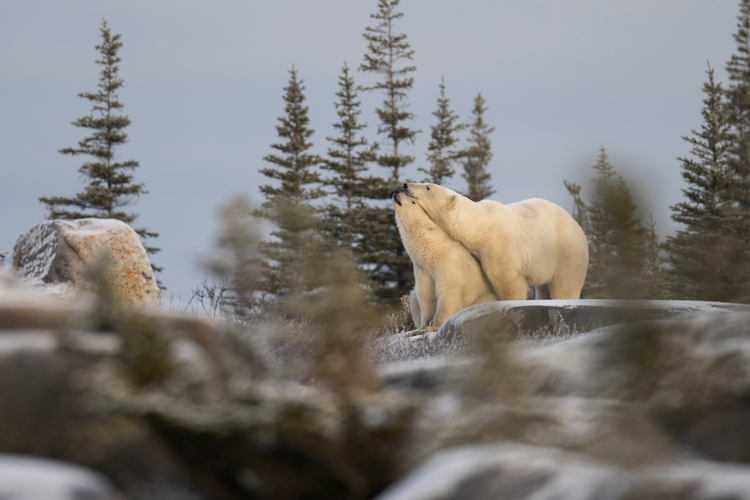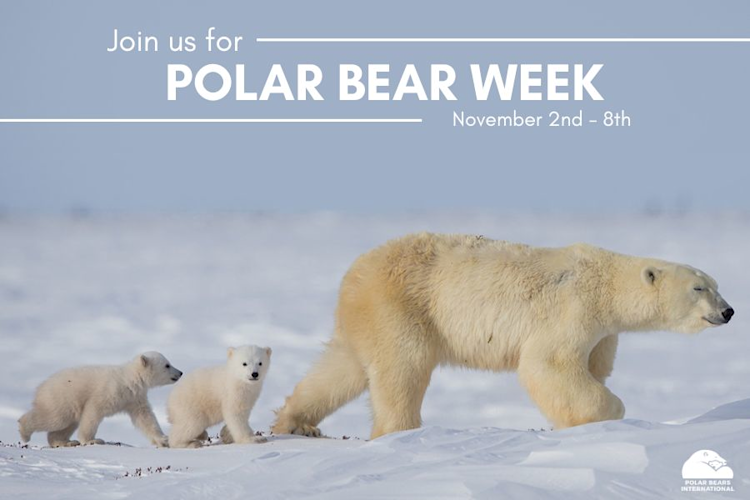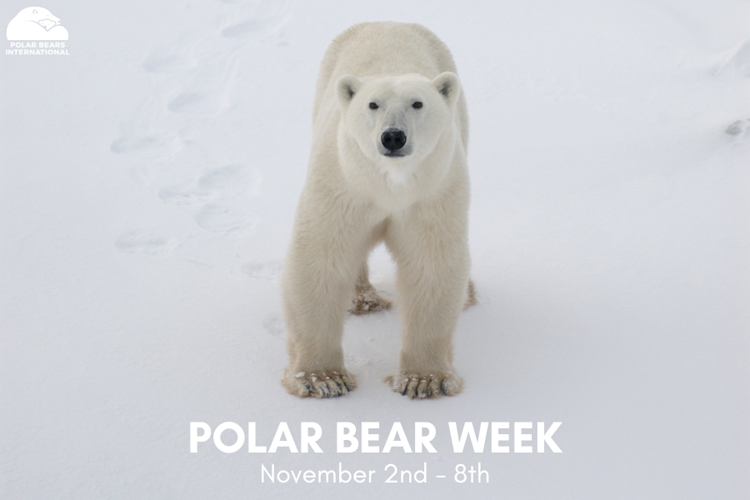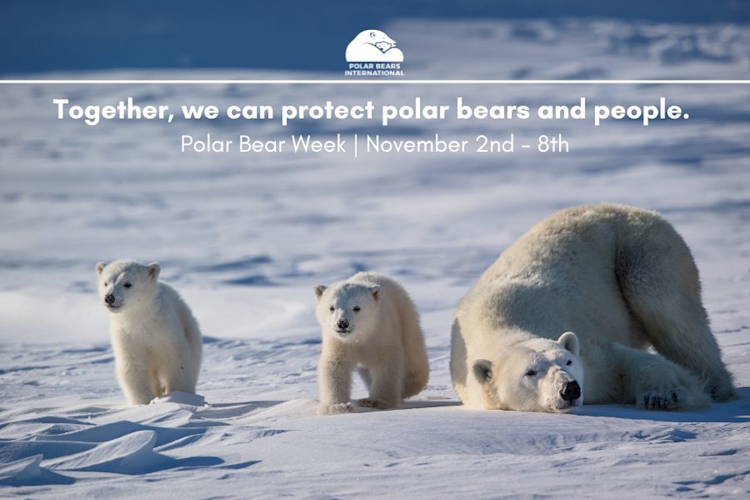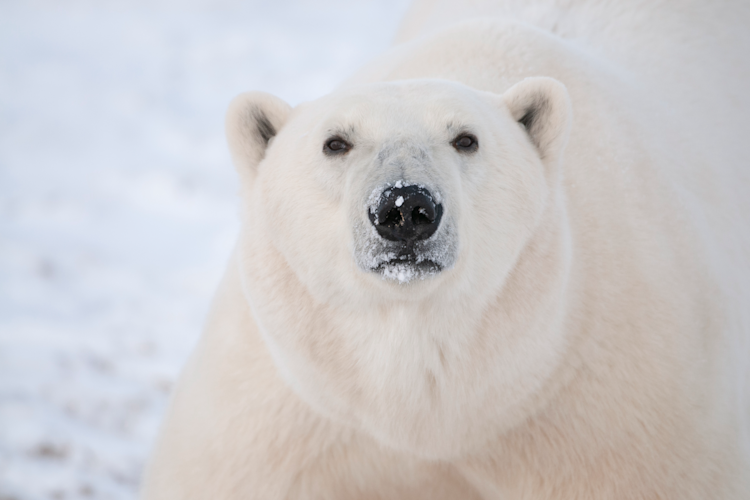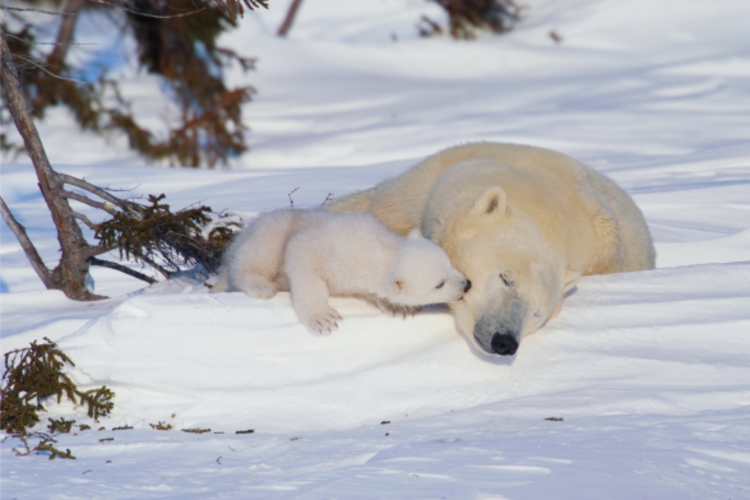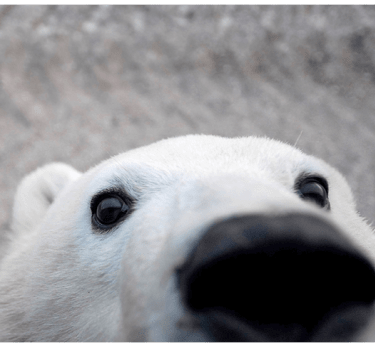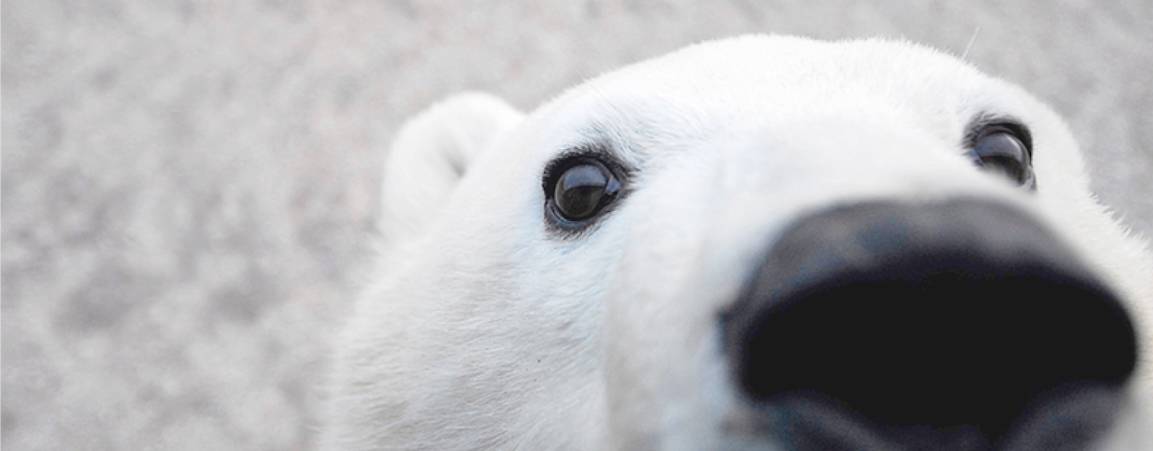Photo: Simon Gee / Polar Bears International
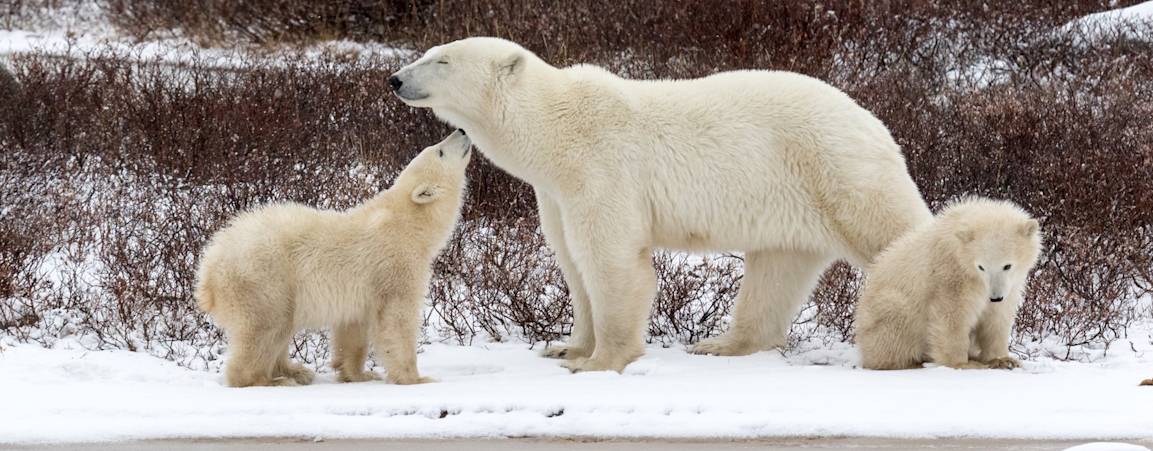
Polar Bear Week AAC Toolkit
Polar Bear Week is the first week of November!
The theme this year is polar bear-human coexistence.
This year the dates are November 2-8. You can help by joining our efforts to celebrate the bears and raise awareness about the challenges they face in a warming Arctic, using the tools and resources below.
Why Does it Matter?
We all have a shared desire to keep our communities safe and our traditions intact.
We believe it is important to protect Arctic sea ice, an ecosystem many species depend on across the circumpolar North.
In some regions, polar bears are now spending 3-4 weeks longer on land than their ancestors did, which means less food. Polar Bears rely on the frozen ocean as a platform for hunting, breeding, and in some cases, denning.
When we burn fossil fuels for energy we release carbon dioxide into the atmosphere, which acts like a blanket trapping heat around our planet that would have otherwise escaped, disrupting our climate and melting Arctic sea ice that polar bears and people depend on.
As bears spend more time on land, they’re nutritionally stressed and increasingly sharing space with humans for longer periods, raising the risk of human-bear interactions.
Polar Bears International’s Arctic Ambassador Center Network has been inspiring communities to act and making a real impact on wild polar bears for over 20 years! As a member of that network, you have an opportunity to talk about climate warming and its impacts on polar bear populations consistently and to change the conversation to be positive, civic-minded, and solutions-focused.
Polar Bear Week in a Nutshell
Every fall, polar bears gather on the shores of Hudson Bay near Churchill, Canada, waiting for the seasonal sea ice to return so they can hunt their seal prey. But the summer ice-free period is three to four weeks longer than it was in the 1980s, straining the limits of the bears’ fat reserves.
Polar Bears International founded Polar Bear Week to coincide with the time when the bears have congregated near Churchill, waiting to return to their seal-hunting grounds. During Polar Bear Week, we celebrate the bears and draw attention to the need to take action on climate change … and you can help!
AAC Tools
AAC Tools
Arctic Ambassador Center materials!
Share your pride in being part of the Arctic Ambassador Center Network by using one of these badges and signs.
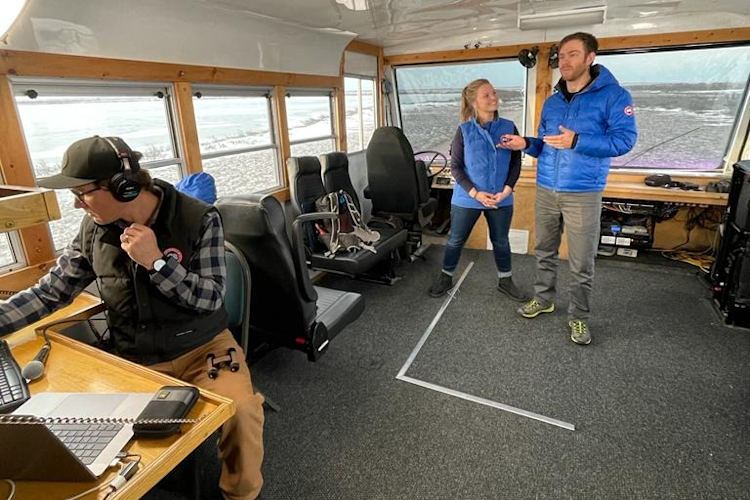
Photo: Kt Miller / Polar Bears International
Tundra Connections
View our educational webcasts and casual live chats and share the schedule with your membership and educational partners. New this year - Connections with Acclaimed wildlife artist and animator Aaron Blaise live from the Tundra!


Create Your Own Content
As trusted messengers we invite you to be a part of a collective effort to keep polar bears and people safe! Helping polar bears and people coexist with each other while we work to address climate change is a critical part of our work on behalf of polar bears.
Write up your own post or use some of the sample language below!
Key Links & Polar Bears International Handles
Facebook: @PolarBearsInternational
Instagram: @polarbearsinternational
TikTok: @polarbearsinternational
LinkedIn: Polar Bears International
YouTube: @PolarbearsinternationalOrg
BlueSky Social: @polarbearsinternational.org
X: @PolarBears
Polar Bear Week short link for social media: pbears.org/polarbearweek
Polar Bear Week Donate short link for social media: pbears.org/protectpbearspeople
Hashtags
#PolarBearWeek #SaveOurSeaIce
Sample Posts
Kindly tag Polar Bears International so we can see your efforts to protect polar bears and people!

Photo: Dmytro Cherkasov
Learn More and Share
Learn More About our Coexistence Efforts
Learn more about our coexistence efforts
Across the Arctic, melting sea ice from climate change is driving more polar bears ashore in more places—and for longer periods. This is leading to an uptick in encounters with people, encounters that too often end in tragedy.
To keep people and polar bears safe, communities need reliable techniques to minimize attracting bears and to deter or frighten them away from areas of human activity. Your generosity will help fund a range of coexistence projects.
